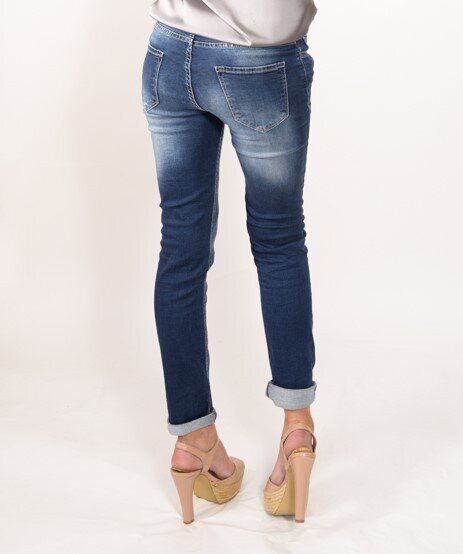Despite our clothing coming complete with washing labels, we all still have washing disasters. Jumpers halve in size, dresses misshape, and colours run. So, I got to thinking, maybe a post that offers you guys a basic insight into the different fabrics and how to care for them might assist. After all, my aim is to help you all create a wardrobe that offers you confidence and enhances the real you. And whether you choose to create this wardrobe with lower priced clothing from High Street stores or higher priced designer wear - it is just as important to keep your outfits looking their best for as long as possible.
Our wardrobes will consist mostly of clothing that has been made using a type of fabric (leather and suede being the exception). Fabrics are manufactured with fibres, twisted or spun together to make a yarn. The yarn is then woven or knitted to make the fabric. Initially fabrics were produced using sources derived from plants or animals but early in the 1900's man-made fibres were introduced into the textile world. As a result, there is now a wide range of fabrics available, especially if you add the blended fabrics into the equation. Blended fabrics are created by mixing and matching 2 or more different yarns.
Obviously, I am unable to cover every fabric possibility but I have tried to cover the ones that are most likely to be hanging in your wardrobe...
Wool
Characteristics: cosy and warm
Wool comes from a variety of animal coats such as sheep, alpacas, camels, cashmere goats and the Angora rabbit.
The most common type of wool comes from sheep that have been specifically bred for yielding wool.
Although sheep wool is a resilient fabric that is able to absorb up to 30% of its own weight in moisture without feeling damp, camel wool is much better for coats. The fibres of camel wool are finer and subsequently the finished product retains the body heat longer than sheep wool.
Cashmere is a popular textile used to make sweaters. It is produced from the underside of the Cashmere goat. The fibres are softer than wool, hence why cashmere feels so luxurious, but they are not as strong.
Caring for Wool
Washing wool too frequently can wear out the fabric and shorten its lifespan considerably
Before you rush to put wool in the laundry basket try brushing off any dirt and refresh the garment in the steam of the bathroom.
Always wash on a delicate setting.
Do not rub wool.
Do not tumble dry - try and dry flat.
Leather
Characteristics: soft yet tough and resistant to wind.
Most leather is made using cattle skin but there are exceptions such as lamb, deer or ostrich.
The animal hides undergo many processes before they are used to make clothing.
Caring for leather:
With the passage of time the natural fibres of leather will break down but there are things that you can do to help your leather look good for longer.
If a leather garment gets wet, hang it to dry away from any heat source.
Store leather on a padded hanger in a dry, dark place.
Condition leather regularly - there are many good conditioners available on the market
Silk
Characteristics: light, luxurious to touch, cool in summer and warm in winter.
Silk is made from the fibres of the cocoon of the silkworm. It is spun to make a satiny, shiny fabric that is light and caresses the figure beautifully.

Author's Own Photo
Caring for silk:
Always check the label - some silk is dry clean only.
If not dry clean only, wash by hand gently, rinse with cold water, do not wring.
To dry, lie flat on a towel and blot with another towel.
Only hang when the weight of the water has been significantly reduced.
Dry on a padded hanger away from direct sunlight.
If ironing is required, use a low setting
Cotton
Characteristics: comfortable and long lasting
Cotton is a natural fibre produced from fibres gathered from the cotton plant. The resulting cloth is particularly good at absorbing and releasing perspiration making it ideal for summer wear.
Caring for cotton:
Cotton is low maintenance.
Machine washable.
Tumble dry on a low heat.
Cotton wrinkles - iron but (top tip alert....) don't iron over a stain or you will make the stain permanent.
Linen
Characteristics: cool and fresh
Linen is a natural textile. It is derived from the stalks of the flax plant which are processed to release the fibres and the resulting yarns are woven to produce a crisp, strong cloth.
Caring for linen:
Linen is easy to care for and grows softer with age.
Linen can be machine washed on a gentle cycle and tumble dried on a cool temperature.
Remove from drier whilst slightly damp and allow to dry completely on a hanger or whilst lying flat.
If ironing, iron whilst slightly damp
Denim
Characteristics: strong and durable
Denim is a strong cotton fabric made commonly with a blue cotton yarn lengthwise that has a white cotton yarn woven over and under (hence why blue jeans are white on the inside).

Author's Own Photo
Caring for denim:
Some people swear that you never wash denim but I am sure that most us will cringe at the thought of never washing our beloved jeans.
When washing for the first time, wash separately.
Always turn inside out prior to washing and use a gentle cycle.
Tumble drying will lead to fading and shrinkage - avoid as much as possible.
Hang to dry away from sunlight.
If you want to keep your denim looking its best for longest always hand wash in cold water.
Hope this all helps